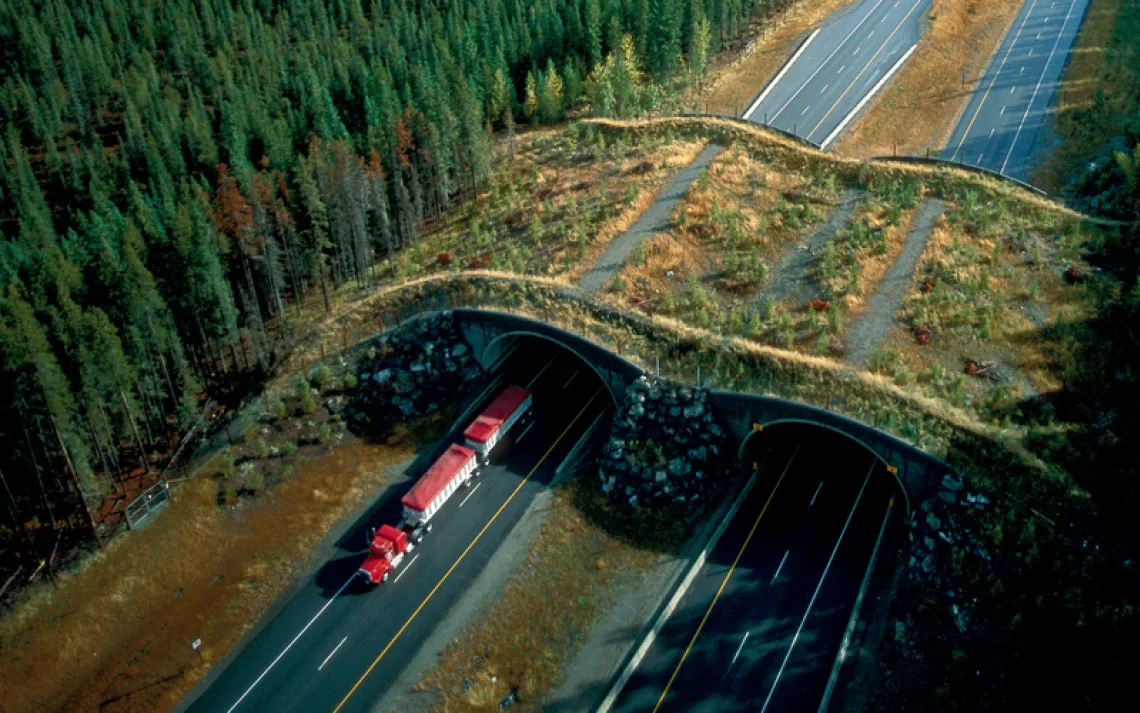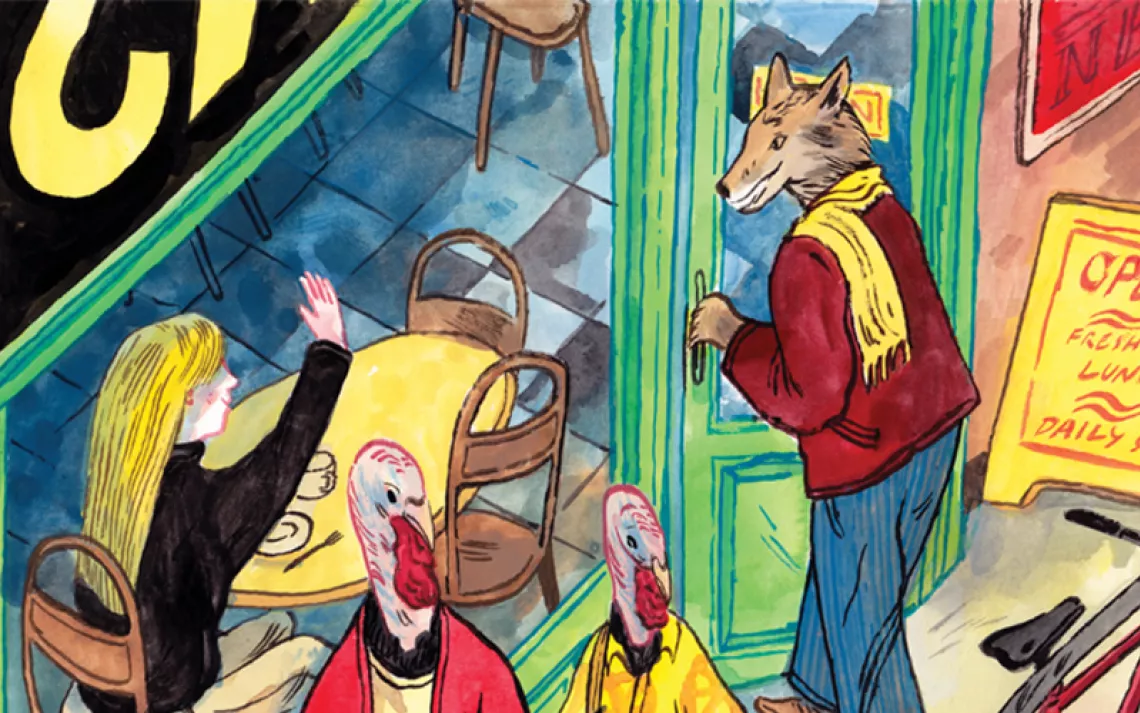In the SF Bay Area, Gray Foxes Provide a Window to Urban Wildlife
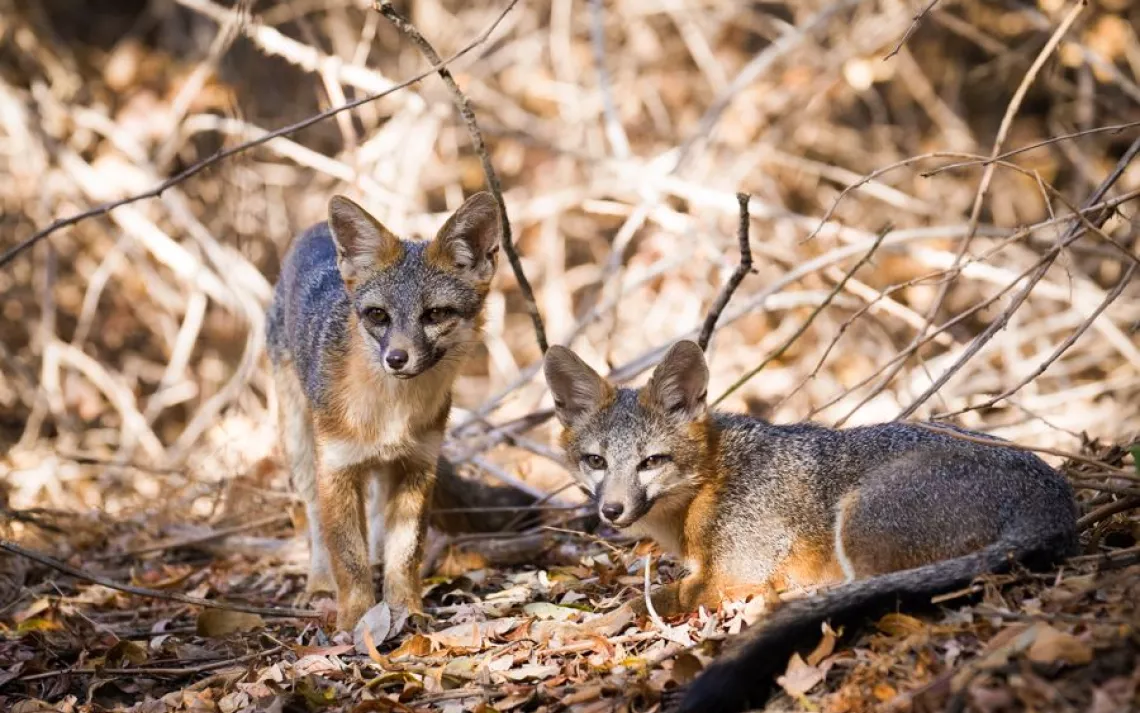
About a dozen gray foxes live on six acres of open space next to the Bayshore Freeway.
|Photos by Jaymi Heimbuch
A Bullock’s oriole may have altered the future of a population of gray foxes living in a strip of marshland between the San Francisco Bay and the US 101 freeway. It certainly altered the life of a man named Bill Leikam.
Six years ago, Leikam—a retired teacher and businessman and a lifelong naturalist—spotted the brightly colored bird and followed it down a little-used path near the Palo Alto Wastewater Treatment facility, hoping to get a few photos. But something entirely different caught his eye: a house-cat-size gray fox at the edge of the trail. The fox soon disappeared into the brush, but the brief encounter sparked a new interest for Leikam that developed into a passionate wildlife conservation project.
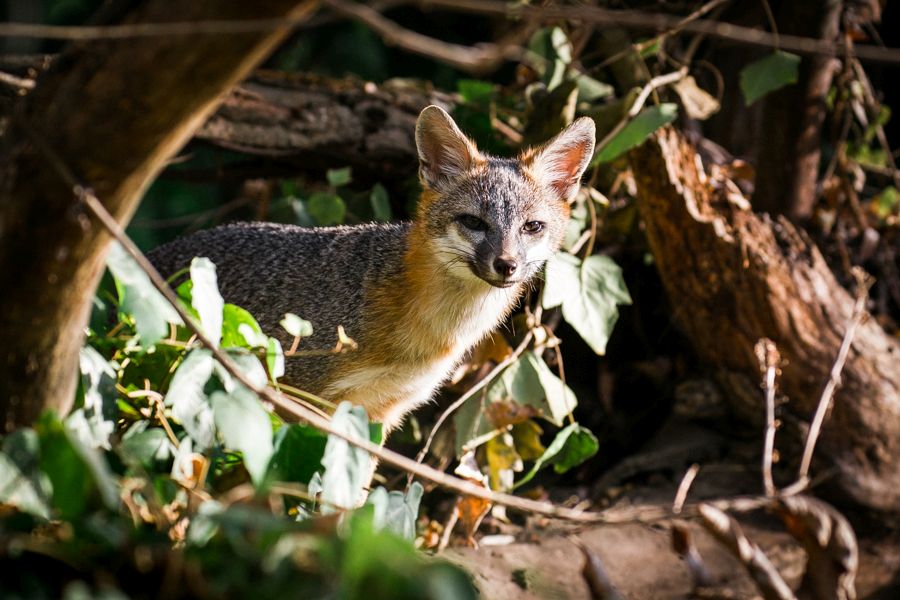
A gray fox peaks out from the bushes.
Every day, twice a day, Leikam walks the edges of the six-acre parcel of open space adjacent to the always-busy Bayshore Freeway. He checks his network of trail cameras and, in the process, documents the soap opera-like relationships among the population of about a dozen gray foxes that live there: the family feuds, fleeting romances and long-term companionships; the kits that survive and those that don’t; the newcomers who are quickly driven off by resident foxes and those who are accepted as mates.
Over the years, Leikam has witnessed gray fox behaviors rarely or never documented, and his careful monitoring has done much to expand our knowledge of the species. One such behavior is a pair of resident foxes having a “helper” fox stay with the family group, assisting in raising the newest litter of kits.
“Although helper females are documented in other canine groups like coyote, no one has ever documented it in the gray fox community, until I saw it unfold there at the baylands,” Leikam says.
Careful note-taking and monthly reports published on the website of his Urban Wildlife Research Project keep interested followers in the loop about the life stories of the foxes.

A gray fox nestles in construction debris.
His vigilance has earned Leikam the nickname “The Fox Guy” and has established him as a leading advocate not only for these particular canid urbanites, but also for other wildlife struggling to live in the shrinking margins of open space around the San Francisco Bay Area.
Leikam, along with his project partner, Greg Kerekes, is exploring a bigger story in which the foxes play a key role: The place the foxes call home is an island of sorts, hemmed in by a freeway, an auto dealership, office buildings, and a bay shoreline that is shrinking as sea levels rise. How the foxes disperse through the urban setting is of key interest to biologists and wildlife conservationists, and so the duo is busy mapping out the creeks, culverts, and other corridors the foxes and other wildlife species use to relocate to new territories.
“We have to open new landscapes for this wildlife so that it can become healthy once again,” Leikam says. “We are on the ground making sure we know where the corridors and connections are across salt marshes and along riparian habitat. Already we know of landscapes that need sculpting so as to provide optimum environments for the young to survive.”
The issue of safe passage to and from open spaces is a dilemma for wildlife that live within or near urban settings. The problem has received widespread attention thanks in part to the famous mountain lion of Los Angeles’s Griffith Park, P-22. The mountain lion is essentially stuck in the urban park, blocked in by the city and freeways. To ease the danger of migration and open up migration corridors for P-22 and other Los Angeles wildlife, advocates are raising $10 million to build an overpass across the nearly impassable 101 freeway.
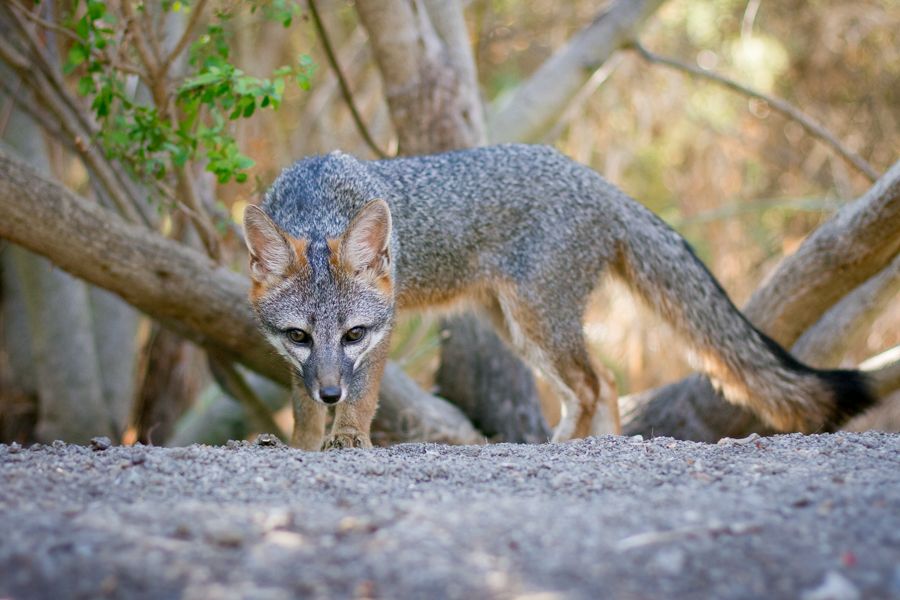
The gray foxes that Leikam documents navigate natural and urban environments.
The story is similar for the wildlife of Palo Alto. To get to new territories to find food or to locate a mate, animals there must navigate under freeways, through human development, and along shrinking green space. Leikam and Kerekes have extensively documented corridors and their conditions, including neglected corridors that have been stripped of the brush cover that wildlife needs to feel safe using them. The pair of citizen-scientists also hope to show proof of the necessity of corridors through DNA testing of the foxes.
An inability to disperse causes a bottleneck for genetic diversity; for example, Leikam has witnessed incest among the foxes. With assistance from the National Wildlife Federation, Urban Wildlife Research Project is raising funds for a DNA study to monitor the family tree and document the extent of inbreeding. The groups are also raising funds for GPS collaring, planning to collar eight-month-old foxes just before they disperse to discover access points where foxes move in and out of the territory. This will help pinpoint where to place the most effort for wildlife corridor protection and restoration.
The team is in a particular hurry as climate change throws an additional wrench into the works: sea level rise. Much of the marshland the foxes and other wildlife use to skirt around the city will be underwater in a matter of decades, making the protection of corridors an even more urgent issue as wildlife will have fewer dispersal routes in the future. The most likely sea-level-rise scenario predicts a permanent three-foot rise, which would put thousands of acres of bay shoreline underwater.
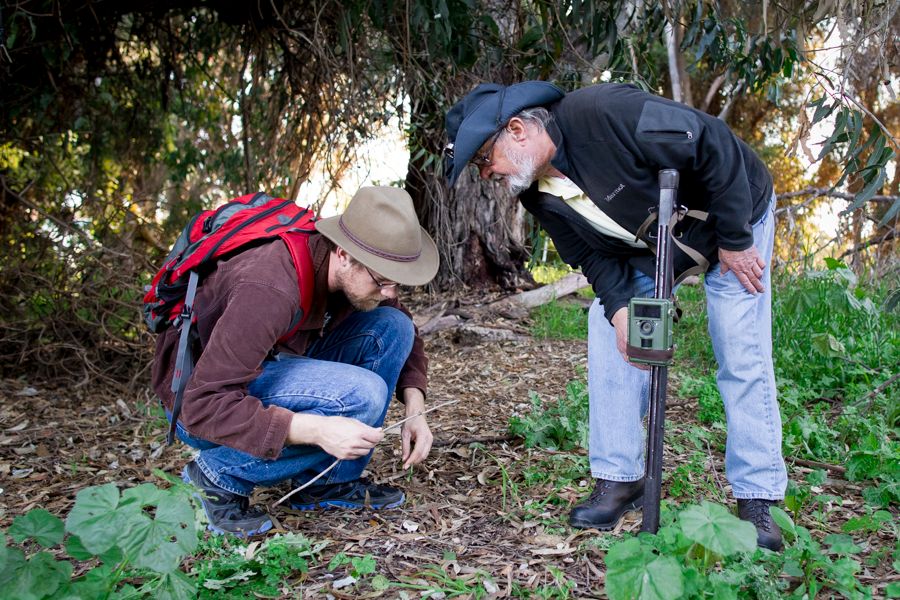
Leikam and Kerekes check their network of trail cameras.
These small and beautiful foxes offer not just a chance to study the use of urban habitat by wildlife, but also an opportunity to put a charismatic face to an issue facing hundreds of species in the Bay Area and in other parts of the country. Wildlife everywhere is increasingly pinned between human development on one side and human-influenced climate change on the other, and creating a connection between people and the animals affected is the surest way to transform apathy into committed conservation.
Leikam says his goal is to connect people to the foxes on both a personal level and a scientific one. He is working on a book that tells the foxes’ stories as a biography, going well beyond stats and maps and into the daily dramas he has witnessed during his years with the animals.
“Down in the eye of it all, people are alienated from the heartbeat pulse of nature. Such alienation allows us to wreak havoc on wildlife,” says Leikam. “ I want to give my readers a story that just might become a bridge and dissolve their alienation.”
Readers will likely grow to see the foxes as individuals, appreciating their distinct personalities and unique struggles through the stories. As Leikam well knows through his own experience, once you get to know gray foxes, it’s impossible to turn your back on them.
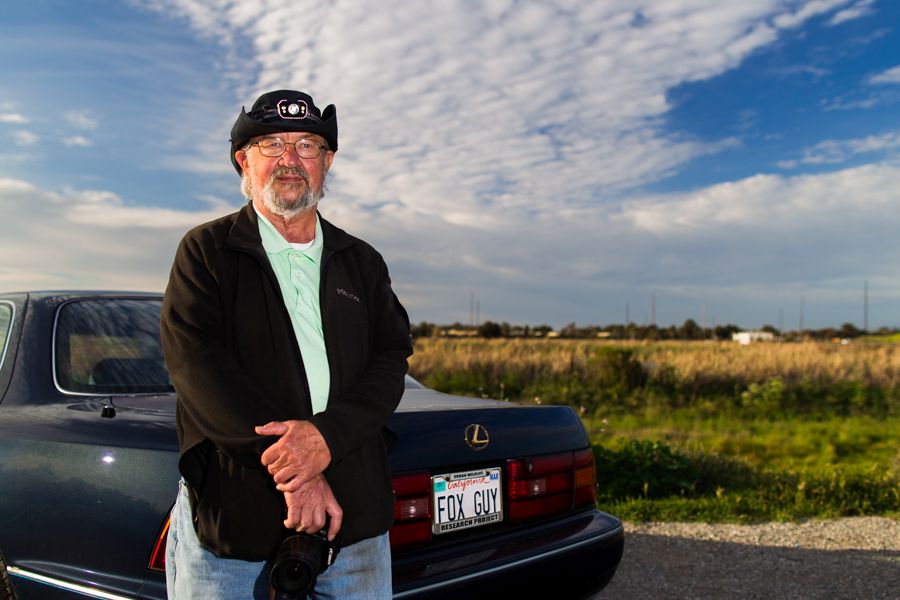
Leikam is known locally as "The Fox Guy."
 The Magazine of The Sierra Club
The Magazine of The Sierra Club

